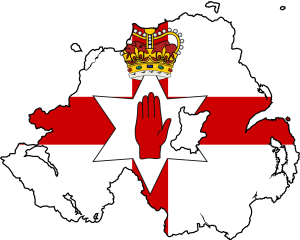Everything You Need To Know For Northern Ireland
Geographical Position And Climate Of Northern Ireland
Northern Ireland is located on the island of Ireland and is one of the four constituent nations of the United Kingdom. It shares a border to the south and west with the Republic of Ireland, while to the east it is bounded by the Irish Sea and to the north the North Channel, which separates it from Scotland.
Northern Ireland enjoys a temperate maritime climate characterized by mild winters, cool summers, moderate rainfall and variable weather. The Gulf Stream also has a significant impact on the climate of Northern Ireland, contributing to milder winters compared to other regions at similar latitudes.
Brief History Of Northern Ireland
Northern Ireland’s history is complex and deeply rooted in cultural, religious, and political differences. It was established as a distinct entity within the United Kingdom under the Government of Ireland Act 1920, following the partition of Ireland. This division led to the creation of two self-governing territories: Northern Ireland, which remained part of the UK, and Southern Ireland, which would later become the Republic of Ireland after further political developments.
The early years of Northern Ireland were marked by sectarian conflict, particularly between its majority Protestant unionist community, who favored continued union with Britain, and a significant Catholic nationalist minority, who sought unification with the predominantly Catholic Irish Free State (later the Republic of Ireland).
These tensions erupted into three decades of conflict known as “The Troubles” starting in the late 1960s, involving paramilitary violence, civil unrest, and political strife that claimed over 3,500 lives.
The Good Friday Agreement (Belfast Agreement) of 1998 was a major turning point, establishing a devolved power-sharing government and laying the groundwork for peace and cooperation between the two communities. Despite ongoing political challenges, this agreement has been fundamental in shaping the contemporary period of relative stability and growth in Northern Ireland.
Religion
The predominant religion in the country is Roman Catholicism. There are Muslim, Hindu and Jewish minorities.
Language
English is the country’s official language.

Northern Ireland offers a rich tapestry of natural beauty, historical landmarks, and cultural experiences that make it a unique destination for tourists. From the rugged coastline and scenic landscapes to the vibrant cities steeped in history, there is something for everyone. With its combination of cultural attractions, historical sites, and natural wonders, Northern Ireland continues to grow as a popular tourist destination.
Places You Must Visit In Northern Ireland
Before You Visit Northern Ireland
Travel to Northern Ireland
By Air
- Belfast International Airport (BFS): The main gateway, with flights from across the UK, Europe, and international destinations.
- George Best Belfast City Airport (BHD): Located closer to the city center, it mainly serves routes from within the UK and Ireland.
- City of Derry Airport (LDY): Offers limited services, primarily to and from destinations in the UK.
By Sea
- Ferry Services: There are regular ferry crossings from Scotland and England to various ports in Northern Ireland, including Belfast and Larne.
With car or bus
- From the Republic of Ireland: You can drive or take a bus or train across the border. There are no customs checks, making travel seamless due to the Common Travel Area agreement.
By Rail
- From Dublin: The Enterprise train service runs between Dublin Connolly Station and Belfast Lanyon Place Station, offering a scenic and convenient option.
Visas for Northern Ireland
Non-EU/EEA Visitors:
- Standard Visitor Visa: Required for tourists from many countries outside the EU/EEA for stays up to 6 months.
- Visa Waiver Program: Some nationalities may enter the UK without a visa for short visits if they meet certain criteria.
EU/EEA/Swiss Citizens:
- Post-Brexit rules allow these citizens to visit without a visa for short stays, but the situation may change, so it’s important to check the latest information.
Common Travel Area (CTA):
- The CTA allows free movement for British and Irish citizens between the UK, Ireland, the Isle of Man, and the Channel Islands.
Best time to visit Northern Ireland
Late Spring to Early Autumn (May to September)
- Weather: Warmer temperatures and longer daylight hours.
- Nature: Landscapes are lush, and flowers are in bloom.
- Events: Peak season for festivals and outdoor activities.
Summer (June to August)
- Peak Season: The warmest months with the best chance for sunny days.
- Tourist Numbers: Higher, especially in popular spots like the Giant’s Causeway.
Shoulder Seasons (April to early May, late September to October)
- Fewer Crowds: A quieter time to explore, with mild weather.
- Autumn Colours: Beautiful fall foliage in parks and rural areas.
Winter (November to February)
- Off-Peak: Fewer tourists and lower accommodation rates.
- Shorter Days: Limited daylight for sightseeing.
- Christmas Markets: Festive atmosphere in cities like Belfast and Derry.
Important Information
Capital – Belfast
Territory – 14,330 km2
Currency – Pound Sterling
Time zone – UTC+0 (GMT) / UTC+1 (BST)
Population – 1,904,563
Demonym – Northern Irish
